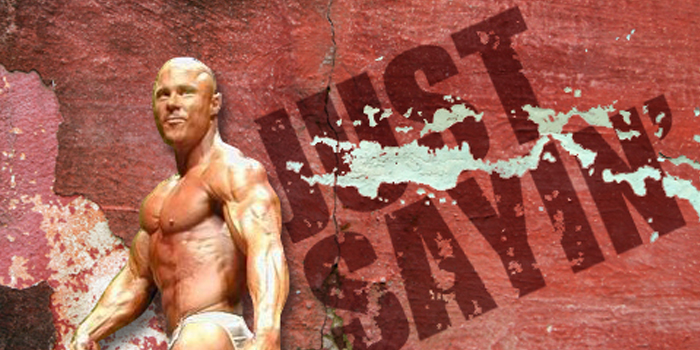
I think we have all heard this before from trainers all over social media:
“I have been getting asked this question a lot lately, so I figured I would post about it…”
Uh-huh. Sure you have.
Then there are trainers who actually DO get asked questions on social media, and I am one of them.
Probably the most often asked question I get — of the 1,000 or so I get per day — is:
“Can I continue to build muscle while in my 40s without getting injured?”
You can. You just need to be smart about your training and make adjustments that take into consideration that you aren’t 25 anymore. When you are 25, you can get away with almost anything, but when you get into your 40s, training years are like dog years: what you could get away with 15 or 20 years ago, you aren’t going to get away with in your 40s.
After answering this question so many times (again, 1,000 times per day), I decided to put together 10 key points that I feel can help almost anyone train to build muscle while minimizing risk and vulnerability to injury. Keep in mind that some of what I am about to say is going to go against what you have heard or been told, is absolute truth. You don’t have to take my advice, but if you don’t, I’m the guy that will point and say, “I told you so.” I am finishing up my 40s in what is arguably my best shape ever, and I have overcome some major injuries before coming to the following list.
The following 10 points are not listed in any specific order because no one point is more important than another. They are all important. As much as I would love to detail all 10 points, I will attempt brevity while remaining pithy — the former not being a strong point of mine.
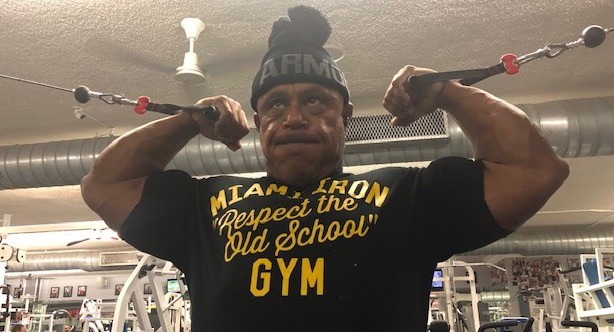
1. Selection and Order of Exercises
Opening your chest day with heavy bench presses is asking for trouble. You might get away with it for a while, but it is a risk not worth taking. Most people can still do heavy compound movements, but opening with an isolation exercise like pec-deck flyes or cable flyes, as an example, would be a good option before moving to a heavier compound movement such as the bench press. Another option is doing your heavier compound exercises last for a muscle group.
You want to pull deads with minimal risk of injury? Do them as your last exercise for back instead of first. Remember, this is bodybuilding, so development is more important than sheer numbers (especially if you are older). Pre-exhausting all of the muscles of the back prior to pulling deads will allow less weight to be used after the muscles are warm, and this can minimize the risk of injury.
Other examples:
- Side laterals prior to overhead pressing
- Leg extensions and leg curls prior to squatting
- Cable press-downs for triceps prior to dips
2. Muscle Group Pairing
Training shoulders first in a workout can cause pain for a lot of people. If you train shoulders after chest, the shoulder complex is thoroughly warmed up and ready to be trained. A traditional push/pull/legs split may seem archaic and not terribly fancy, but it is incredibly advantageous for the 40-something trainer. Yes, you may be slightly less strong, but the trade-off is a fair one in that the risk of injury is significantly lower. You gain nothing if you are able to train a bit heavier opening with shoulders and then have to take time off due to a shoulder injury.
3. Rep Ranges
If you are being presumptive, you will guess that I advocate only for higher reps, but I do not. I absolutely believe that most people in their 40s can still train with heavy weights in the lower rep ranges, going down as low as six to eight reps to failure. The catch is when you should do these heavier sets.
LISTEN: Table Talk Podcast Clip — Justin Harris Talks Hormones and Janae Kroc's Bodybuilding Prep
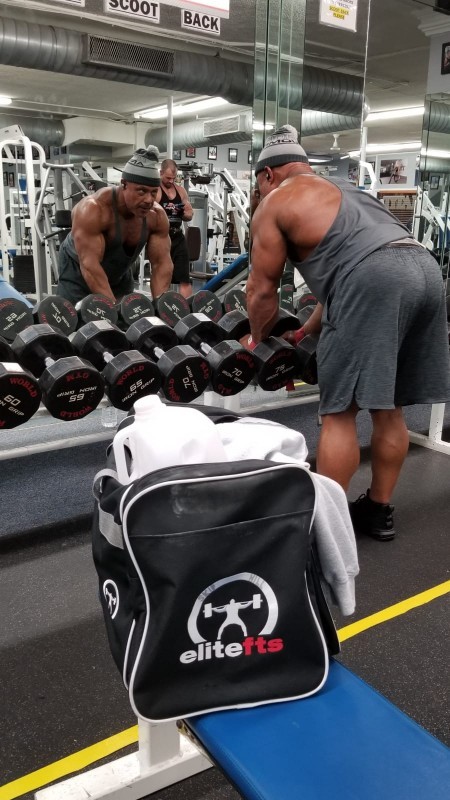
One of the concepts that I have used very successfully — both with myself and with clients — is to warm up with several sets until you get to your top set or heaviest set, and then you can start your working sets. I consider working sets to be to failure or beyond, but that may be different for you. The point is to start your working sets with the heaviest weight you can get for 12 to 15 reps. The following sets you keep the weight the same, and due to taking your sets to failure, fatigue will not allow you to get the same amount of reps on each succeeding set. The next set you may only get nine and the third set you may only get six to eight reps. Using this method will allow you to hit those lower rep ranges with minimal risk of injury.
4. Correct Bio-Mechanics
This is a no-brainer but it still needs to be said. You cannot expect to minimize injury while using shitty form. Every single rep you do should be controlled both on the eccentric and concentric portion of the movement, and the last rep should look the same as the first rep. In fact, I encourage my clients to do what I do and try to make every exercise harder whenever possible. The bench press is a great example. I do what I call “stop reps.” From full lock out, lower the bar to the chest, and stop for one second before pressing the bar back to full lockout. This removes any momentum and it also helps to keep the ego in check by not using even a slight bounce to allow more weight on the bar than is necessary.
5. Exercise Selection
Completely disregard any ridiculous rules you have heard, about what you “have to do” to get huge. You do not have to do squats to get huge legs. You do not have to do deads to get a huge back. You do not have to do heavy barbell curls to get huge biceps.
The list is long of people with great chest development who do not do barbell bench presses. At the same time, Arnold squatted religiously and was certainly not known for having gargantuan legs. Are there exceptions? Of course there are. Are these exceptions in their 40s? Not very often, and if you use Dexter as an example, you aren’t Dexter, and neither am I.
If an exercise doesn’t allow you to target the muscles that you want to target or an exercise causes you pain, don’t do that exercise. Now, if an exercise is just hard or you are weak on an exercise, that is usually an indication that you could stand to benefit from it. Be honest with your assessment because if you give up on an exercise simply because you don’t like it, just stay home and make more room in the gym for someone who wants to get huge. At that point, you are just taking up space.
6. Stretch
I know, I know, stretching SUCKS.
“I don’t want to do it because it doesn’t make me huge.”
There are things in life that we just need to do because it will benefit us in the long run. I don’t like to wipe my ass but I have found that wiping my ass is a better option than not doing it. I consider stretching to be a similar situation. You may not have to stretch in your 20s because… you’re in your 20s. If you are in your 40s and you want to keep your back healthy, STRETCH. I dealt with chronic lower back pain for years, and it only stopped when I religiously stretched (and continue to do so to this day).
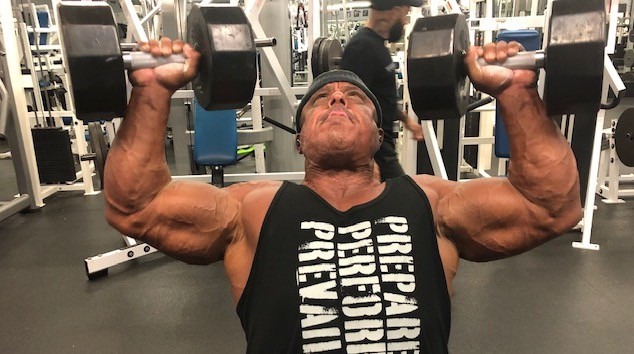
7. Proper Training Gear
No, not THAT gear. I’m talking about using sleeves for your knees or elbows. Neoprene sleeves provide some compression and warmth to joints to minimize injury.
Some people prefer using a lifting belt and others don’t. I have gone back to using one, and I won’t ever train without a belt again. I know it’s not cool to wear one, but I don’t give a shit what a 25-year-old thinks, anyway. Twenty-five-year-olds have no idea what it feels like to have to shit standing up in the shower due to such horrible back pain that you can’t even sit on a toilet. Not only does a belt provide support but it also helps to keep the muscles of the lower back warm, as well.
Something else you can do, but you may find off-putting if you live in a warm climate, is layer your clothing. I live in Fort Lauderdale, Florida, and I train there and in Miami. I still wear a sweatshirt to the gym every single day to start my training sessions. As I get into my workouts, I then take it off after I am sweating and warmed up. A warm body or muscle is less likely to get injured.
NOTE: If you train in a gym that cranks the air-conditioning to the point where it is cold, you should seriously consider changing gyms.
8. Know the Difference Between Intensity and Heavy Weights
Too many people think the only way to grow muscle is to train heavy and that is not true. Obviously, you want to train as heavy as you can, but I strongly believe that intensity builds muscle before simply lifting heavy weights. We have all seen someone in the gym who is small and relatively skinny using pretty big poundages for an exercise. At the same time, we have all seen big dudes using relatively lighter weights and thought, “I figured that guy would be stronger than he is.” Forget about heavy weights for a minute and watch the guy in the gym who trains harder than anyone else. You will almost always see him progressing and growing more than everyone else.
Time under tension is another point that should be made. Study after study shows that time under tension can be a critical component for hypertrophy.
9. Don’t Ignore Pain
If you feel something wrong while doing a working set, you better stop, asap, and assess your situation. Injuries can occur without any warning but usually, there is at least some indication, prior to a major injury, that hinted that something bad might be coming.
My rule of thumb is if I feel something during a working set, I immediately stop the set, and if I feel I want to push on and continue, I go right back to my warm-up weights and build up from there to my working set, again. If I feel nothing during the warm-ups, I will continue. If I feel ANYTHING that doesn’t feel right during those warm-up sets, I go home. I would much rather miss a workout and come back and hit that muscle group in another week than I would to be forced to take three to six months off.
10. Ignore the Clock
I know that a lot of us — maybe even most of us — are on heavy time constraints. We have a lot of other obligations in our day than just spending time getting huge in the gym. Still, it has to be said that if you are racing the clock to get your workout done, you stand a much greater chance of taking risks that you normally wouldn’t take. We tend to warm up less and faster when time is an issue. We also tend to make larger jumps in weight from set to set. Doing this only increases the risk of injury.
READ MORE: Guidelines For Injury-Free Progress: Controlling Intensity
Be sure to allow yourself enough time to train so that you can make adjustments if you feel you need more time to stretch or to warm up.
I know what it feels like to train in my 40s because I have been doing it for just under 10 years. Though I haven’t made a ton of mistakes, I have made enough to teach myself how to train smarter. I remind myself frequently that as much as I don’t feel my age, I am most certainly my age.
I want to continue to push my physique as far as I can before I rot in the ground; I assume because you are reading this that you want to do the same. To continue to progress, we all need to train hard. However, training smart should take precedence, especially in our 40s. Just Sayin’.










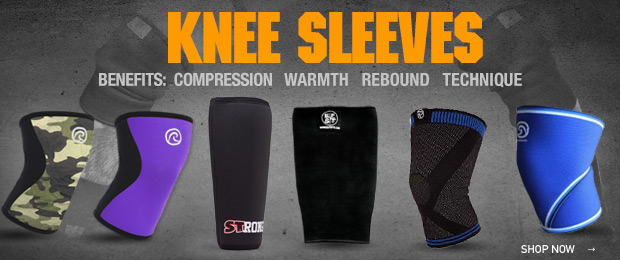
"I'm 50 and there is no need to be smart about training. Injuries are for pussies."
That cover it?
To say that a 50-year old should not be smart about their training is pretty foolish.
Thank you for these points, I will follow them religiously.